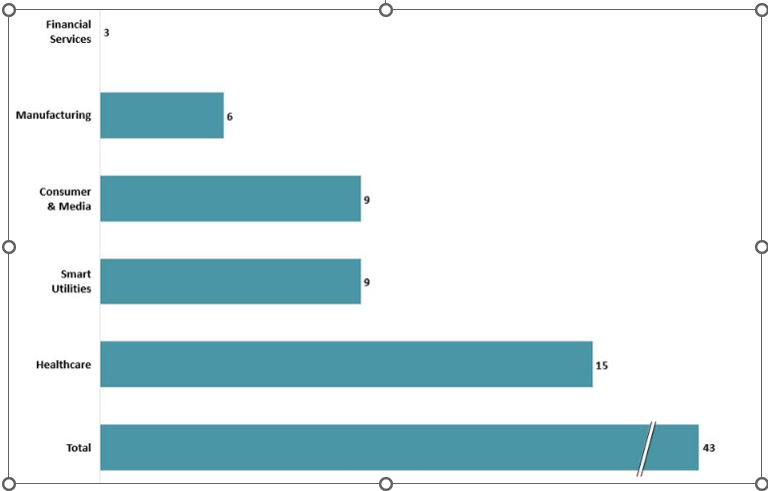The UK economy depends a lot on manufacturing. This sector is responsible for 11% of the country’s Gross Value Added (GVA) and 44% of its total exports. It also employs 2.6 million people directly. It is still a sector that has had to deal with a wide range of problems over the past few years.
These problems include changes in the economy, lockouts, upcoming decisions about trade agreements with Europe, and the possible effects on supply chains.
In the middle of all this uncertainty, one thing is for sure: the manufacturing industry is entering a time of change. This can’t be stopped at any level of the company. And how people react to this change will be the deciding factor in who wins and who loses in the end.
As mentioned, the manufacturing industry is generating the highest revenue in the UK. Therefore, in 2021, many owners launched their manufacturing industry by taking out business cash loans. This helped the owners to expand their operations.
The use of 5G technology could lead to positive changes in almost every part of the global economy. 5G has a lot of good things to offer, especially for the industrial sector. Using this technology will be a truly revolutionary thing to do. Here is how 5G will improve the manufacturing industry.
Ways In Which 5G Boost Your Industrial Production
Smart Factories: Remote Connectivity and Business Resilience
The use of 5G private networks in the manufacturing sector makes it possible to build intelligent manufacturing facilities. Smart factories make it possible for factories to be more automated.
This could lead to several benefits, such as real-time links to client demand projections, reliable quality, predictable production capacity, and lower manufacturing costs. Smart factories make it possible for more people to see what’s happening in the factory.
This helps production to move faster and for factories to be more efficient. All of these things are key to improving manufacturing productivity. When it comes to making businesses more resilient, 5G could be a big help in situations called “lockdown scenarios”.
Businesses are forced to use remote operating models. 5 G’s low latency, reliable connection, and fast speeds make it possible for employees to talk to each other in real time, even if they work in different places.
For example, a 5G-powered virtual reality system could connect an on-site engineer with a colleague working from home. This would make it possible for them to talk and work closely together without having to be in the same room.
The Path to a Hyperconnected Future
Connection alone may not get us very far, but when combined with intelligence, it is a powerful force. 5G will enable the Internet of Things (IoT). Everything that’s linked communicates to everything else.
Machines talk to machines, machines talk to people, and people talk to each other. Both one-to-one and one-to-many exchanges take place. This means that huge amounts of data and information are being sent in real-time over a 5 very safe G network.
5 G’s high level of hyperconnectivity makes network slicing and splicing possible. This lets businesses build networks that are customised to meet the needs of their businesses. This ensures that each user or device gets just the right amount of connection, improving performance and saving money.
In a factory, for example, there are many different kinds of manufacturing equipment, and each one needs a different amount of connectivity and a different latency and throughput.
Also, hyperconnectivity allows for a more globalized, efficient, and waste-free manufacturing ecosystem when physical connections and travel are limited. If, for example, high-value assets can be tracked in real-time from far away, global supply chains will work better.
This will make it easier to run things better. When robots can tell workers about potential problems before they happen, workplaces will be safer and more reliable.
From Concept to Reality
We already know that 94% of manufacturers are using new strategies to grow their businesses. This is a big step in the right direction, and it’s great to see so much support for change from so many people.
But how can we turn this into real network implementations in manufacturing environments?
The solution is pretty simple: we need to come up with compelling value propositions. This will show those show manufacturers how disruptive this technology is and what it can do for their businesses to get them to use it.
Until recently, the main goal of 5G experiments was to find out if the technology could be useful in the business world. For example, research done at the Worcestershire 5G Testbed found that 5G could boost productivity by up to 2%. This would add £2.6 billion to the economy if used everywhere.
The main focus of the trials has changed in recent years. Now, initiatives such as 5G-ENCODE, which are a part of the government’s £200 million 5G Testbeds and Trials Programme, have been established.
This demonstrates how 5G can be utilised to leverage specific problems that arise in the business sector to solve those problems.
With the help of the network, experiments will be conducted to evaluate the use of augmented and virtual reality for design, manufacturing, and training; monitoring and tracking time-sensitive assets; and wireless real-time in-process monitoring and analytics.
The results and insights from the research will show exactly how 5G technology is used to solve certain problems in an industrial setting.
This information will be very helpful in the future when it comes to building a reliable and effective business strategy. Even though projects like 5G-ENCODE may focus on one part of the economy, the business models can be used in many other fields.
In the case of 5G-ENCODE, this goes beyond manufacturing and includes places like hospitals, stadiums, offices, and other places. This could benefit from the use of next-generation networks.
The graph shows the financial benefits of 5G to the UK GDP:

Source: consultancy.uk
Conclusion
There’s no getting around it because it’s hard for manufacturers to do business now. But, in what seems like a lucky turn of events, these problems arise just as new technologies are getting off the ground and gaining much traction.
The 5G wireless network isn’t a cure-all but a step toward a more connected and productive future. The arrival of private 5G networks will mark the beginning of a new era of hyper-connectivity. This will give businesses a huge amount of potential. At this very moment, the course of history is about to shift significantly.
